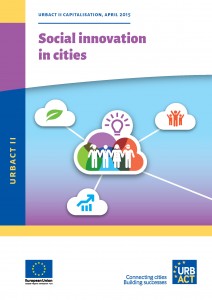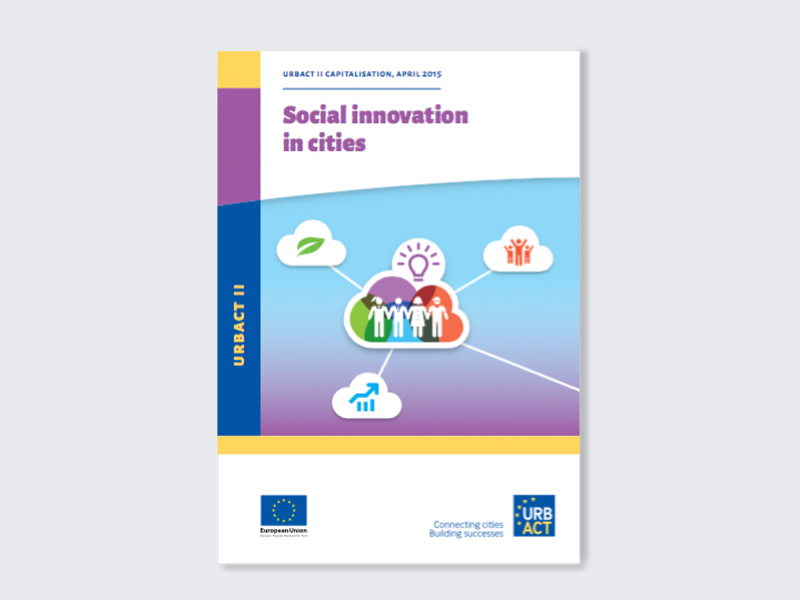 Title of the article / “Social innovation in cities, URBACT II capitalisation”
Title of the article / “Social innovation in cities, URBACT II capitalisation”
Authors / Jégou, F., Bonneau, M.
City administrations are facing a whole range of challenges on the social, environmental and economic fronts. New competences are being transferred from the national or regional levels while the budgets available to tackle them are shrinking. In this increasingly difficult context, social innovation is a new asset. Citizens are taking promising initiatives. They are inventing new and more sustainable solutions to solve their day-to-day problems. They are engaging in the lives of their neighbourhoods and regenerating the social fabric around them. They are taking part in the design and delivery of public services. In doing so, they are taking care of common resources and meeting many of the concerns that city administrations have.
This publication looks at social innovation from the point of view of cities. Social innovation is intended here to mean innovative solutions, new forms of organisation and new interactions to tackle social issues. In particular, it focuses on innovative solutions in terms of the governance of cities: new forms of collaboration between the city administration, citizens and local stakeholders which can generate more sustainable, resilient and open systems at city level. The first article sets the scene: what does social innovation mean? What is the potential for cities? How is social innovation reflected in the URBACT capitalisation process and in the EU so far? It is easier to understand social innovation by looking at examples rather than by reading a theoretical definition. This is the reason why we start with two in-depth investigations presenting the practices of two cities: Amersfoort, a medium-sized city in the Netherlands, is designing a collaborative city administration, while Gdańsk in Poland is taking initial steps towards sharing responsibility with its citizens. A comparative mapping of initial and breakthrough governance practices to facilitate social innovation shows the commonalities and differences between the two cities.
A series of five articles then focuses on key questions emerging from the in-depth investigations in Amersfoort and Gdańsk and from many other innovative practices identified in European cities, in particular those involved in URBACT thematic networks: • What is changing in city administrations to facilitate collaboration with citizens? Listening better to all voices to better spot social innovation and then play a brokerage role between stakeholders to implement these innovations. • How are citizens helping to build collaborative public services? What are the potential and limits of their involvement? • How can cities create the right environment for social innovation to develop? What combination of tools and agencies, offline and online, can catalyse citizens’ energies and contributions? • How can cities create space for experimentation and facilitate the maturation, deployment and scaling up of social innovation? • How can cities use their purchasing power to facilitate social innovation, orient public procurement and use public money to kick-start new initiatives? A final synthesis section pulls together the lessons learned. It formulates policy recommendations and warnings, and wraps them up into 10 actions for cities to start with social innovation. The authors of this publication on social innovation hope that you enjoy reading it as much as we enjoyed meeting so many dynamic cities and enthusiastic citizens while preparing it!
DOWNLOAD
http://urbact.eu/sites/default/files/03_socialinn-web.pdf
